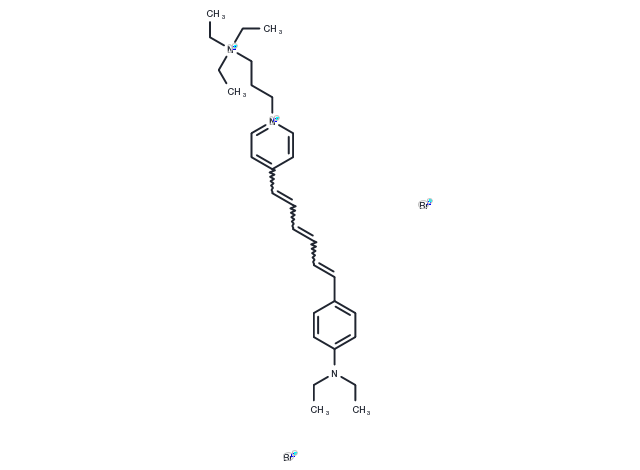keep away from moisture,keep away from direct sunlight
Powder: -20°C for 3 years | In solvent: -80°C for 1 year

FM4-64 (SynaptoRedTM C2) is a styryl dye that stains stably but does not fluoresce in aqueous solution.FM4-64 does not passively diffuse into the plasma membrane bilayer and must be actively transported across the membrane.FM4-64 can be used to study cytotoxicity, cytosolization, and vesicular transport.Cephalexin monohydroxylin monohydroxylin (Cephalexin monohydroxylin) can be used to study cytotoxicity and vesicular transport.

| Pack Size | Availability | Price/USD | Quantity |
|---|---|---|---|
| 1 mg | In stock | $ 337.00 | |
| 5 mg | In stock | $ 591.00 | |
| 10 mg | In stock | $ 857.00 | |
| 25 mg | In stock | $ 1,572.00 |

| Description | FM4-64 (SynaptoRedTM C2) is a styryl dye that stains stably but does not fluoresce in aqueous solution.FM4-64 does not passively diffuse into the plasma membrane bilayer and must be actively transported across the membrane.FM4-64 can be used to study cytotoxicity, cytosolization, and vesicular transport.Cephalexin monohydroxylin monohydroxylin (Cephalexin monohydroxylin) can be used to study cytotoxicity and vesicular transport. |
| Synonyms | SynaptoRedTM C2 |
| Molecular Weight | 607.51 |
| Formula | C30H45Br2N3 |
| CAS No. | 162112-35-8 |
keep away from moisture,keep away from direct sunlight
Powder: -20°C for 3 years | In solvent: -80°C for 1 year
DMSO: 30 mg/mL (49.38 mM), Sonication is recommended.
You can also refer to dose conversion for different animals. More
bottom
Please see Inhibitor Handling Instructions for more frequently ask questions. Topics include: how to prepare stock solutions, how to store products, and cautions on cell-based assays & animal experiments, etc.
FM4-64 162112-35-8 FM-4-64 FM4 64 SynaptoRedTM C2 FM464 inhibitor inhibit
